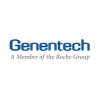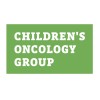
Safety Study of AG-120 or AG-221 in Combination With Induction and Consolidation Therapy in Participants...
Newly Diagnosed Acute Myeloid Leukemia (AML)Untreated AML3 moreThe purpose of this Phase I, multicenter, clinical trial is to evaluate the safety of AG-120 and AG-221 when given in combination with standard AML induction and consolidation therapy. The study plans to evaluate up to 2 dose levels of AG-120 in participants with an isocitrate dehydrogenase protein 1 (IDH1) mutation and up to 2 dose levels of AG-221 in participants with an isocitrate dehydrogenase protein 2 (IDH2) mutation. AG-120 or AG-221 will be administered with 2 types of AML induction therapies (cytarabine with either daunorubicin or idarubicin) and 2 types of AML consolidation therapies (mitoxantrone with etoposide [ME] or cytarabine). After consolidation therapy, participants may continue on to maintenance therapy and receive daily treatment with single-agent AG-120 or AG-221 until relapse, development of an unacceptable toxicity, or hematopoietic stem cell transplant (HSCT). The study will end when all participants have discontinued study treatment.

Total Therapy for Infants With Acute Lymphoblastic Leukemia (ALL) I
Acute Lymphoblastic LeukemiaThe purpose of this study is to test the good and bad effects of the study drugs bortezomib and vorinostat when they are given in combination with chemotherapy commonly used to treat acute lymphoblastic leukemia (ALL) in infants. For example, adding these drugs could decrease the number of leukemia cells, but it could also cause additional side effects. Bortezomib and vorinostat have been approved by the US Food and Drug Administration (FDA) to treat other cancers in adults, but they have not been approved for treating children with leukemia. With this research, we plan to meet the following goals: PRIMARY OBJECTIVE: Determine the tolerability of incorporating bortezomib and vorinostat into an ALL chemotherapy backbone for newly diagnosed infants with ALL. SECONDARY OBJECTIVES: Estimate the event-free survival and overall survival of infants with ALL who are treated with bortezomib and vorinostat in combination with an ALL chemotherapy backbone. Measure minimal residual disease (MRD) positivity using both flow cytometry and PCR. Compare end of induction, end of consolidation, and end of reinduction MRD levels to Interfant99 (ClinicalTrials.gov registration ID number NCT00015873) participant outcomes.

Reduced-Intensity Conditioning (RIC) and Myeloablative Conditioning (MAC) for HSCT in AML/MDS
Acute Myeloid Leukemia (AML)Myelodysplastic Syndrome (MDS)1 moreThe purpose of this study is to compare safety and efficacy of reduced-intensity conditioning and myeloablative conditioning regimens prior to HSCT in high-risk AML/MDS pediatric and young adult patients. This study investigates the use of two novel conditioning therapies for hematopoietic stem cell transplant (HSCT). The primary focus of both the investigators' myeloablative and reduced-intensity conditioning regimens is to reduce overall toxicity so that pediatric and young adult patients with high-risk AML/MDS with significant pretransplant comorbidities who would have been ineligible to proceed to HSCT previously can now receive potentially life-saving treatment.

A Study to Assess the Safety and Efficacy of Two Combinations of Isocitrate Dehydrogenase (IDH)...
LeukemiaMyeloid1 moreThe purpose of this study are to determine the recommended combination dose of AG-120 and AG-221 separately when administered with azacitidine and, to investigate the safety, tolerability, and efficacy of the combinations of AG-120 with azacitidine and AG-221 with azacitidine versus with azacitidine alone in participants with acute myeloid leukemia (AML) with the isocitrate dehydrogenase (IDH) enzyme isoforms 1 or 2 mutations, respectively.

Study of Iomab-B vs. Conventional Care in Older Subjects With Active, Relapsed or Refractory Acute...
Acute Myeloid LeukemiaLeukemia13 moreThe primary objective of this study is to demonstrate the efficacy of Iomab-B, in conjunction with a Reduced Intensity Conditioning (RIC) regimen and protocol-specified allogeneic hematopoietic stem cell transplant (HCT), versus Conventional Care in patients with Active, Relapsed or Refractory Acute Myeloid Leukemia (AML).

A Study of ASP2215 (Gilteritinib) by Itself, ASP2215 Combined With Azacitidine or Azacitidine by...
Acute Myeloid Leukemia (AML)Acute Myeloid Leukemia With FMS-like Tyrosine Kinase (FLT3) MutationThis is a clinical study for adult patients who have recently been diagnosed with acute myeloid leukemia or AML. AML is a type of cancer. It is when bone marrow makes white blood cells that are not normal. These are called leukemia cells. Some patients with AML have a mutation, or change, in the FLT3 gene. This gene helps leukemia cells make a protein called FLT3. This protein causes the leukemia cells to grow faster. For patients with AML who cannot receive standard chemotherapy, azacitidine (also known as Vidaza®) is a current standard of care treatment option in the United States. This clinical study is testing an experimental medicine called ASP2215, also known as gilteritinib. Gilteritinib works by stopping the leukemia cells from making the FLT3 protein. This can help stop the leukemia cells from growing faster. This study will compare two different treatments. Patients are assigned to one of these two groups by chance: a medicine called azacitidine, also known as Vidaza®, or an experimental medicine gilteritinib in combination with azacitidine. There is a twice as much chance to receive both medicines combined than azacitidine alone. The clinical study may help show which treatment helps patients live longer.

Stem Cell Transplantation With NiCord® (Omidubicel) vs Standard UCB in Patients With Leukemia, Lymphoma,...
Hematological MalignanciesAcute Lymphoblastic Leukemia (ALL)5 moreThis study is an open-label, controlled, multicenter, international, Phase III, randomized study of transplantation of NiCord® versus transplantation of one or two unmanipulated, unrelated cord blood units in patients with acute lymphoblastic leukemia or acute myeloid leukemia, myelodysplastic syndrome, chronic myeloid leukemia or lymphoma, all with required disease features rendering them eligible for allogeneic transplantation.

A Safety, Efficacy and Pharmacokinetic Study of BTCT4465A (Mosunetuzumab) as a Single Agent and...
Lymphocytic LeukemiaChronic2 moreThis is a Phase 1/2 dose-escalation study of BTCT4465A (Mosunetuzumab) administered as a single agent and in combination with atezolizumab in participants with relapsed or refractory B-cell NHL and CLL. The study will consist of a dose-escalation stage and an expansion stage where participants will be enrolled into indication-specific cohorts.

Blinatumomab in Treating Patients With B-cell Acute Lymphoblastic Leukemia With Minimal Residual...
Adult Acute Lymphoblastic Leukemia in Complete RemissionB Acute Lymphoblastic Leukemia2 moreThis phase II trial studies how well blinatumomab works in treating patients with B-cell acute lymphoblastic leukemia whose disease is in remission (causes no symptoms or signs) but is still present in a small number of cells in the body (minimal residual disease). Immunotherapy with monoclonal antibodies, such as blinatumomab, may induce changes in the body's immune system and may interfere with the ability of tumor cells to grow and spread.

Response-Based Chemotherapy in Treating Newly Diagnosed Acute Myeloid Leukemia or Myelodysplastic...
Acute Myeloid LeukemiaDown Syndrome3 moreThis phase III trial studies response-based chemotherapy in treating newly diagnosed acute myeloid leukemia or myelodysplastic syndrome in younger patients with Down syndrome. Drugs used in chemotherapy work in different ways to stop the growth of cancer cells, either by killing the cells, by stopping them from dividing, or by stopping them from spreading. Response-based chemotherapy separates patients into different risk groups and treats them according to how they respond to the first course of treatment (Induction I). Response-based treatment may be effective in treating acute myeloid leukemia or myelodysplastic syndrome in younger patients with Down syndrome while reducing the side effects.
